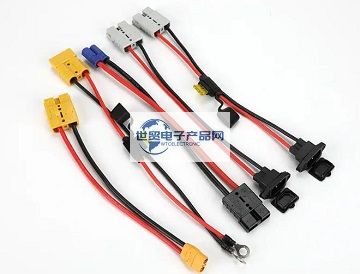Categorization:Product Information
A harness connector is a device used to connect wires between different devices. It usually consists of several wire connectors and can be found in various devices such as automobiles, airplanes, household appliances, and so on. The process of producing wiring harness connectors involves many aspects, including design, material selection, processing, assembly and so on. First of all, design is the key to the production of harness connectors. The design needs to consider many factors such as the size, shape, material, interface type, number of wires, and location of the connector. For example, automotive wiring harness connectors need to consider waterproof, anti-vibration and other factors, while household appliances wiring harness connectors need to be more delicate and compact. The main goal of the design is to ensure that the connector can reliably connect the wires and that the wires are properly routed and positioned inside the connector. Secondly, the choice of materials is also a key factor in the production of wiring harness connectors. Commonly used materials include plastic, metal, rubber, etc. When choosing materials, we need to consider the strength, stiffness, oxidation resistance, insulation performance, corrosion resistance and other factors of materials. For example, for automotive wiring harness connectors, the use of high-temperature, grease-resistant materials can ensure that the connector maintains good performance in harsh environments. Third, processing is one of the key steps in the production of wiring harness connectors. The process includes mold making, injection molding, stamping, riveting, welding and other steps. Mold manufacturing is the basis for the production of wiring harness connectors, and it is necessary to manufacture the appropriate mold according to the design drawings. Injection molding is the process of injecting plastic material into the shape of the connector through a mold, while stamping is the process of making the shape of the connector from sheet metal through a stamping mold. Riveting and welding are the process of joining different parts together, which requires highly accurate machining techniques and equipment. Finally, assembly is the last step in the production of the harness connector. Assembly involves assembling different connector components together and ensuring the quality and performance of the connector through inspection. This process usually requires the use of special tools and equipment, such as clamps, knives, test instruments, and so on. Generally speaking, the production of harness connectors needs to go through many steps, such as design, material selection, processing, assembly and so on. Each step requires highly accurate techniques and equipment to ensure the quality and performance of the connector. At the same time, the production of wiring harness connectors also needs to comply with relevant quality standards and specifications, such as ISO9001.

---------------------------------------------------------------------------------------------------
About the World Trade Electronic Products Network Platform related brief introduction and sales product brief introduction: World Trade Electronic Products Network-professional agent/production/sales of various { connector | wiring harness | cable products }; If you have relevant [connector | harness | cable products] procurement/purchase needs or want to buy/know what connector | harness | cable products solutions we can provide, please contact our business personnel below; if you have relevant [connector | harness | cable products] sales/resources and promotion needs, please click "Business Cooperation ←" to negotiate with the specialist!